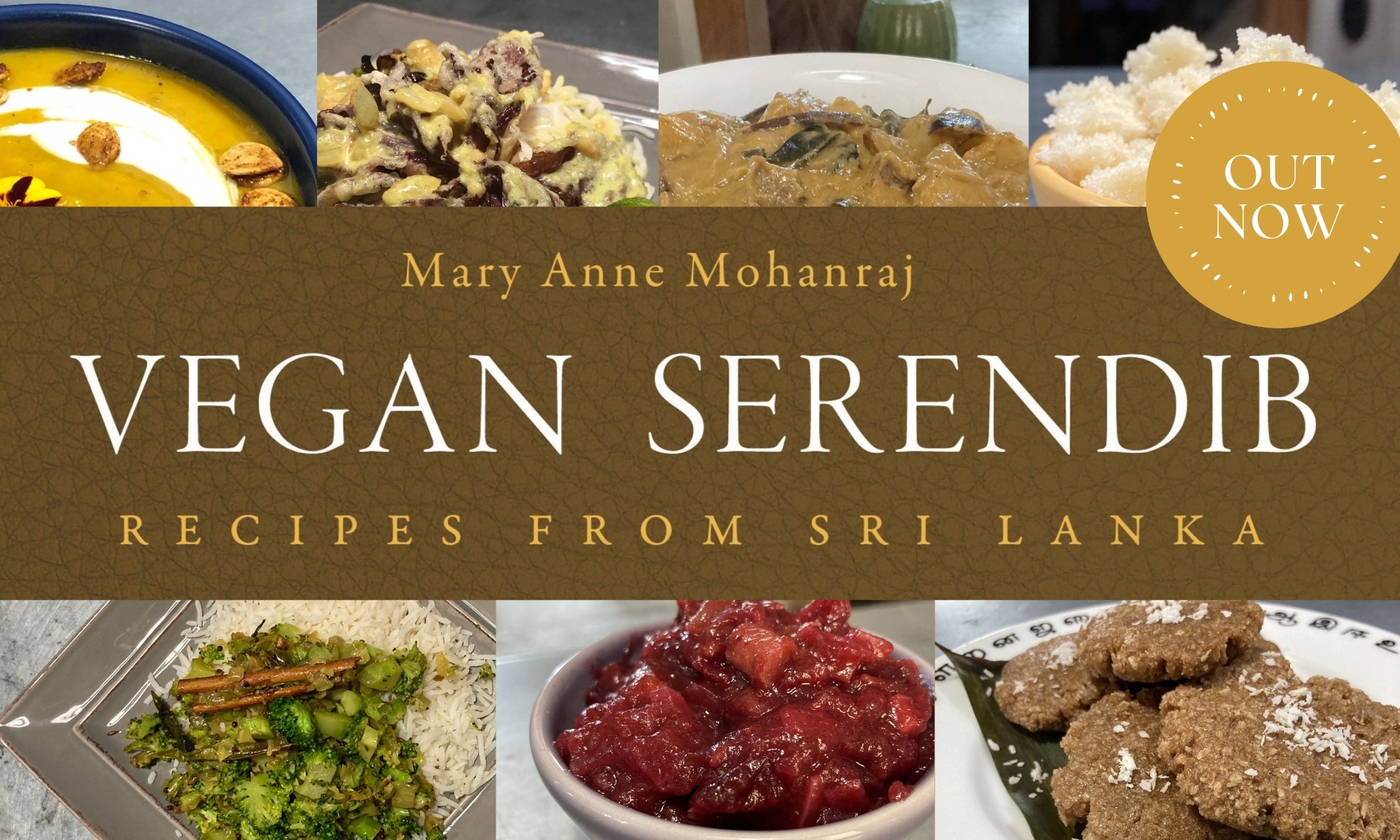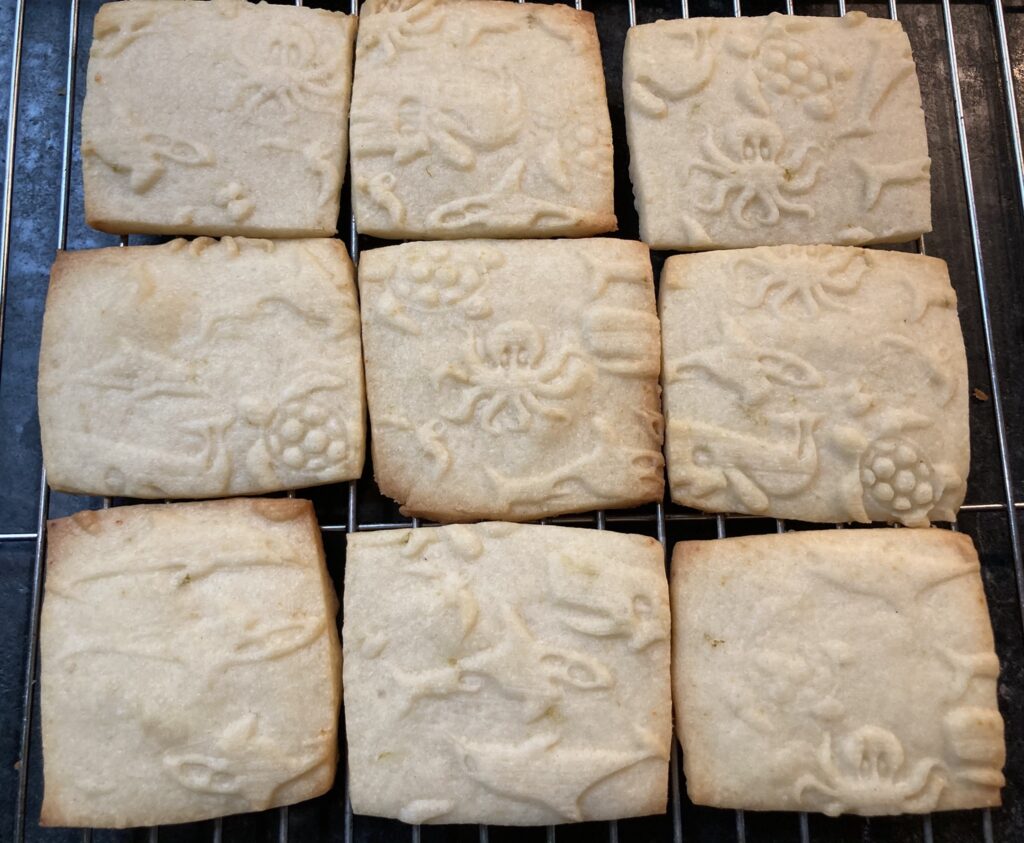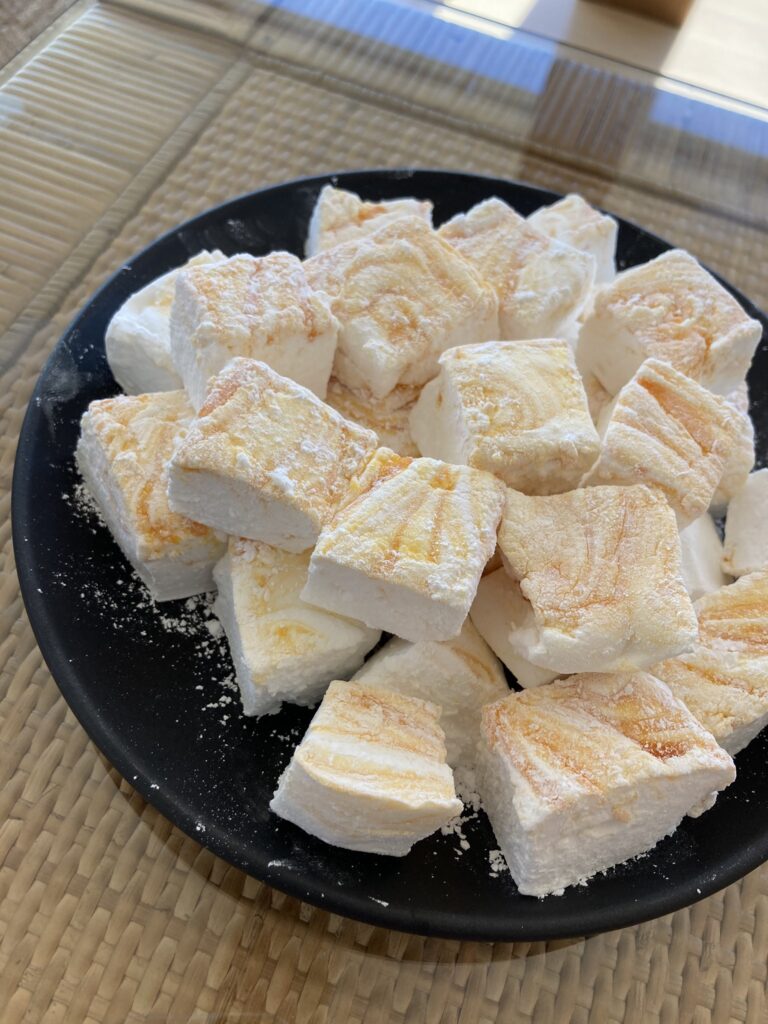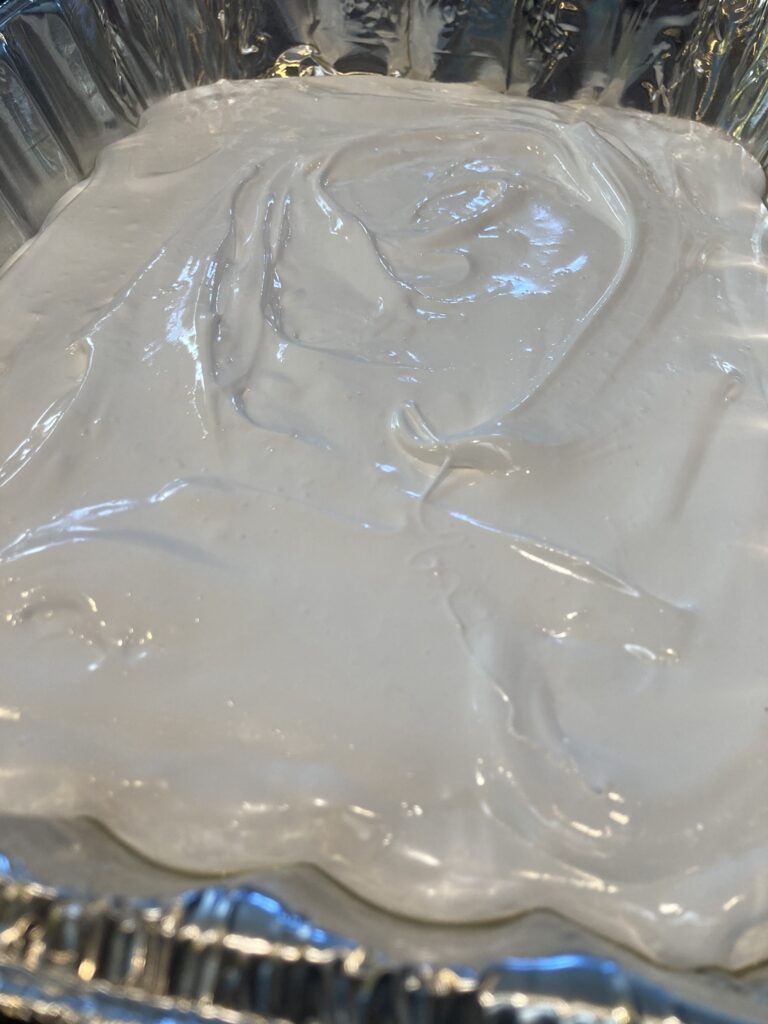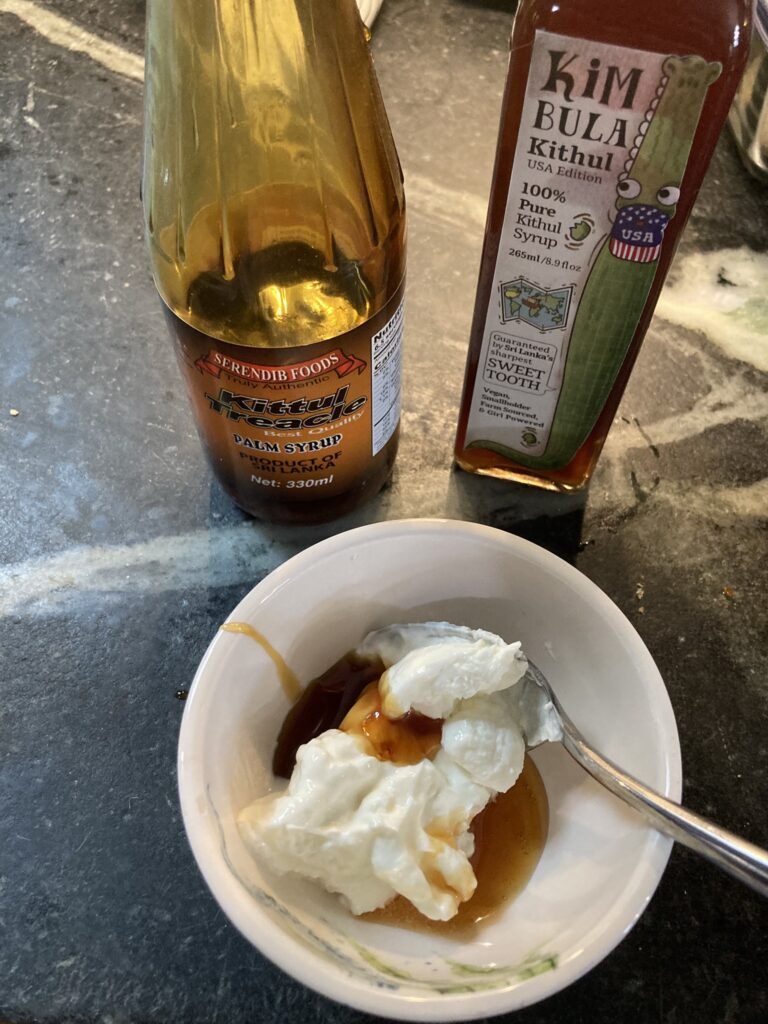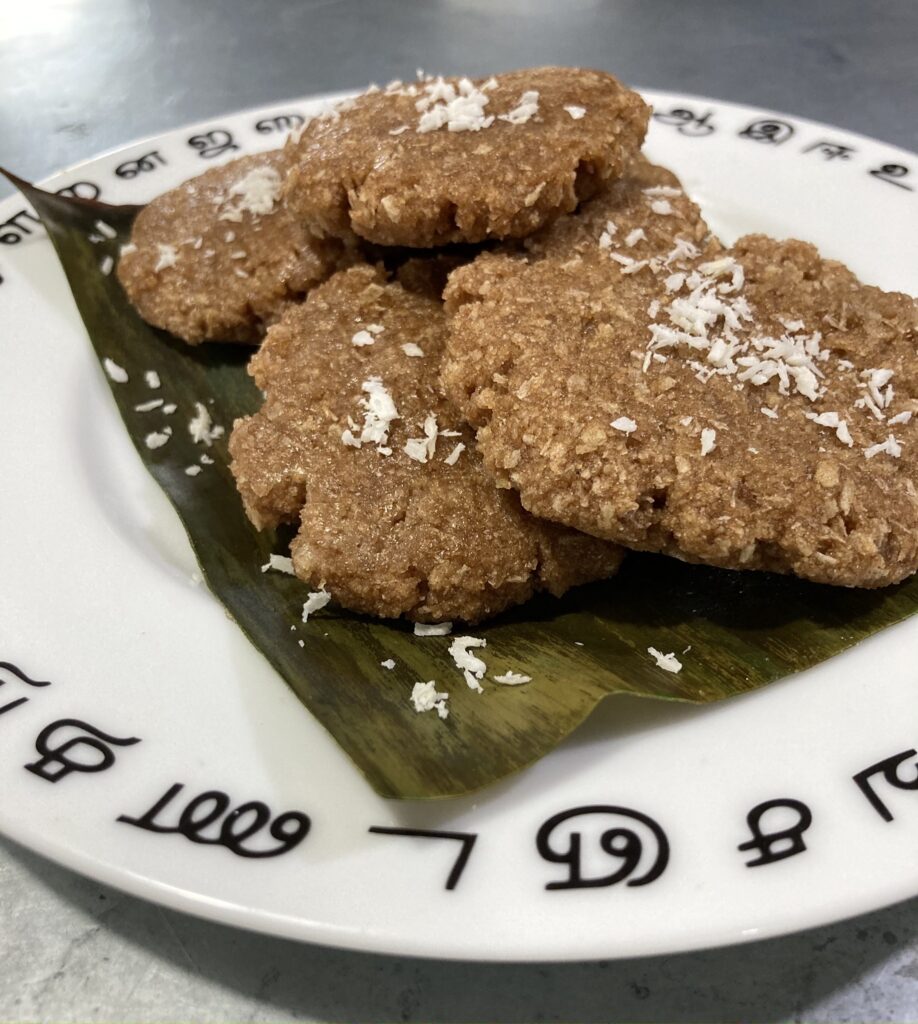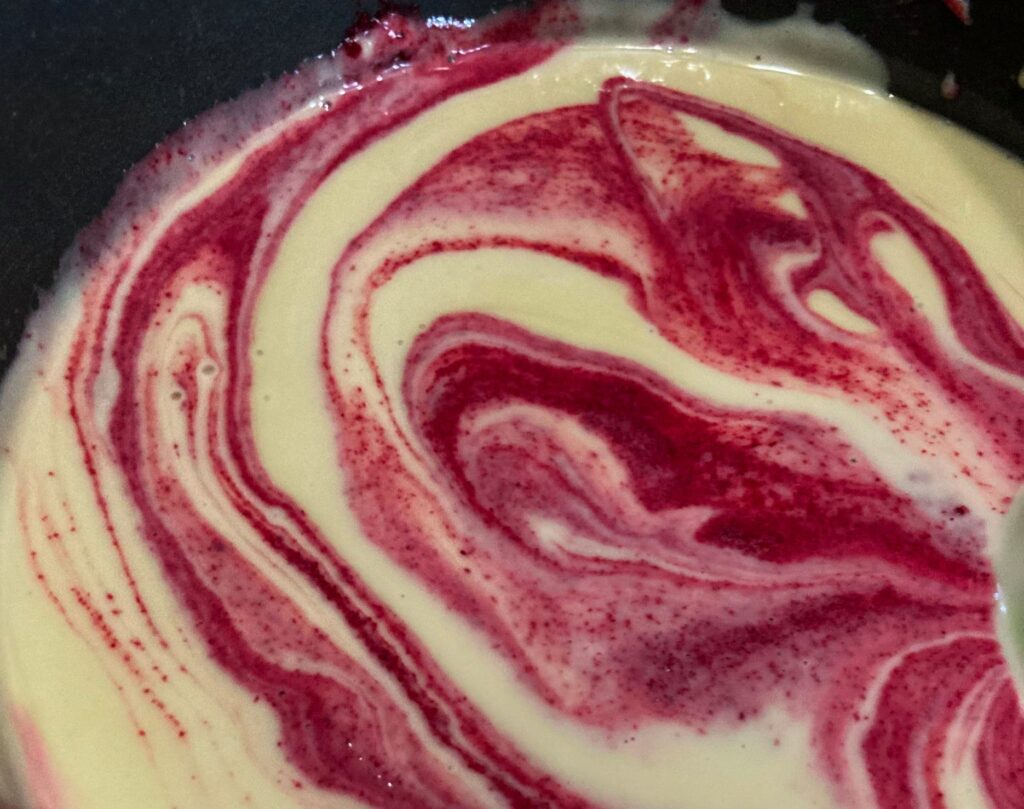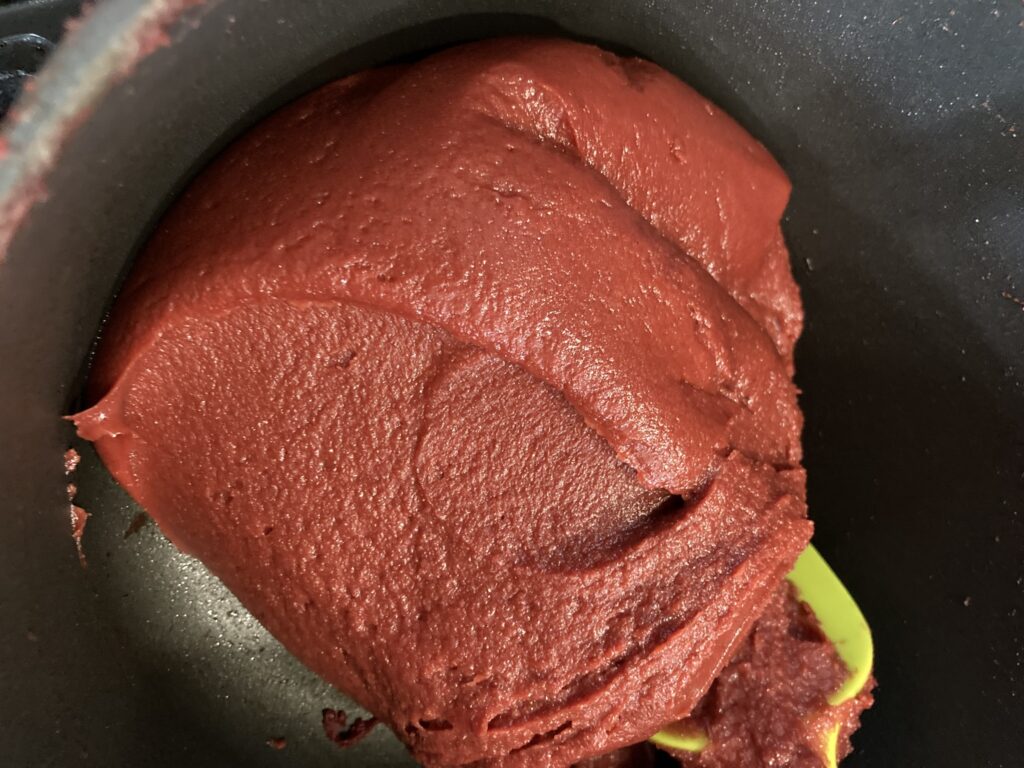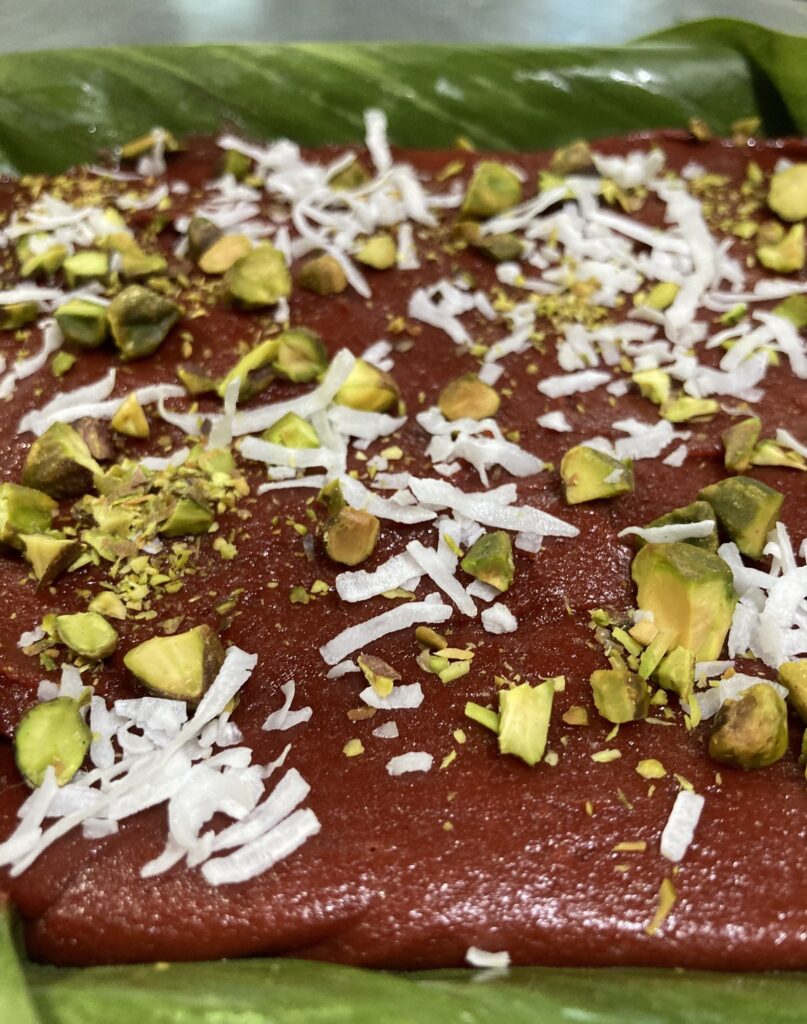It can be a little tricky working with embossed rolling pins, because if the dough is too chilled and hard, it’s tough to press enough for a good impression, but if it’s too soft and warm, it just smooshes and tears. With my shortbread dough, I usually find that 15 minutes in the fridge is about right:
– make dough & preheat oven
– put a sheet of parchment paper on a large cutting board
– pat out half the dough
– add a second sheet of parchment paper and roll flat to desired thickness
– chill 15 minutes in fridge
– remove top sheet of parchment paper and roll with embossing pin
– cut into squares (or as desired)
– slide parchment paper with embossed cookies to baking sheet (I like the insulated ones for even baking) and
– put baking sheet in fridge for another 15 minutes — don’t skip this, or the dough will spread too much and you’ll lose a lot of definition
– bake 12-15 minutes
Making cookies this way is a bit of a process; I did a batch last night, and I think it took about 2 hours total. But I was reading a great book, so it was mostly do a thing, set a timer, read for a while, do a thing, set a timer, read for a while, repeat. Pleasant and peaceful way to spend an evening. With a nice big cookie as reward when I was done. ![]()
